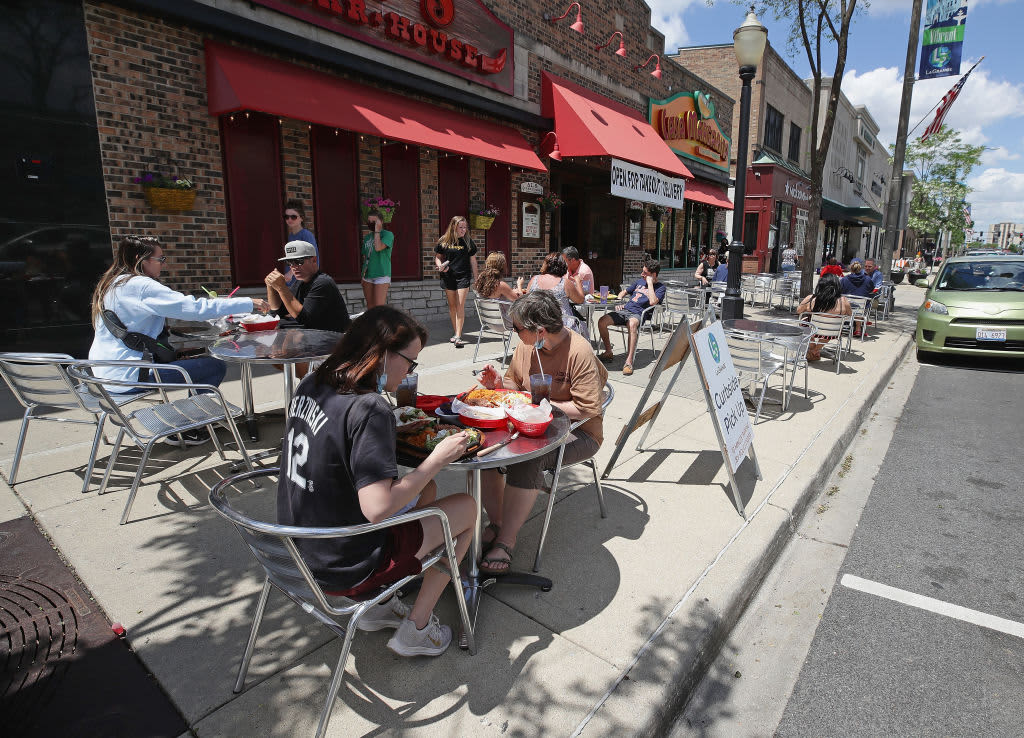Diners eat lunch on the sidewalk in front of Casa Margarita restaurant on May 29, 2020 in LaGrange, Illinois. Phase 3 of Illinois governor J.B. Pritzker’s “Restore Illinois” plan began today with limited reopening’s of some businesses as a step toward restoring normal life during the COVID-19 pandemic.
Jonathan Daniel | Getty Images
As states move forward in their reopening progress, Americans have greater opportunity to eat out, shop and even travel. More people have also been able to work, with a record 2.5 million jobs added in May that helped unemployment drop to 13.3%.
This return to some semblance of normalcy has helped reignite an economy battered by the coronavirus. After one of the biggest economic and employment crises in history, the U.S. is beginning to bounce back.
These five charts track progress in the U.S. as its economy makes it way towards recovery.
Direction requests
With states opening businesses and lifting travel restrictions, consumers now have more places to go. Data from navigation app Apple Maps shows an upward trend in requests for driving and walking directions. However, with people continuing to work from home and wary of catching the virus on crowded train cars or buses, transit directions remain more than 50% below levels seen in January.
Restaurant bookings
Multiple states have allowed restaurants to resume indoor dining, so now customers are returning to booking sites and apps to make reservations. Restaurant bookings are now at 80% below their levels from last year, according to data from online reservation service OpenTable network. In the month of April, bookings were down 100% when compared to last year as most restaurants in the U.S. were restricted to takeout, curbside pickup and delivery orders.
Hotel occupancy
Hotels have begun welcoming more guests as their occupancy rates near 40%, according to data from global hospitality research company STR. Top travel markets like New York City and Atlanta even had hotel occupancy rates above 40%. However, typically popular destinations like Oahu Island, Hawaii and Orlando, Florida reported low occupancy levels.
Air travel
Air travel is still struggling amid the pandemic based on the number of travelers passing through Transportation Security Administration checkpoints. Passenger numbers are have fallen more than 80% when compared to last year, but there are still slight increases in May and June ahead of the busy summer travel season.
Home purchases
Recent boosts in mortgage applications for purchasing single-family homes could be attributed to pent-up demand, according to Joel Kan, associate vice president of Economics and Industry Forecasting at the Mortgage Bankers Association. The applications are up nearly 20% when compared to last year, according to data from the MBA. The recent increase might also signal a desire to move from crowded cities to spacious suburbs.
